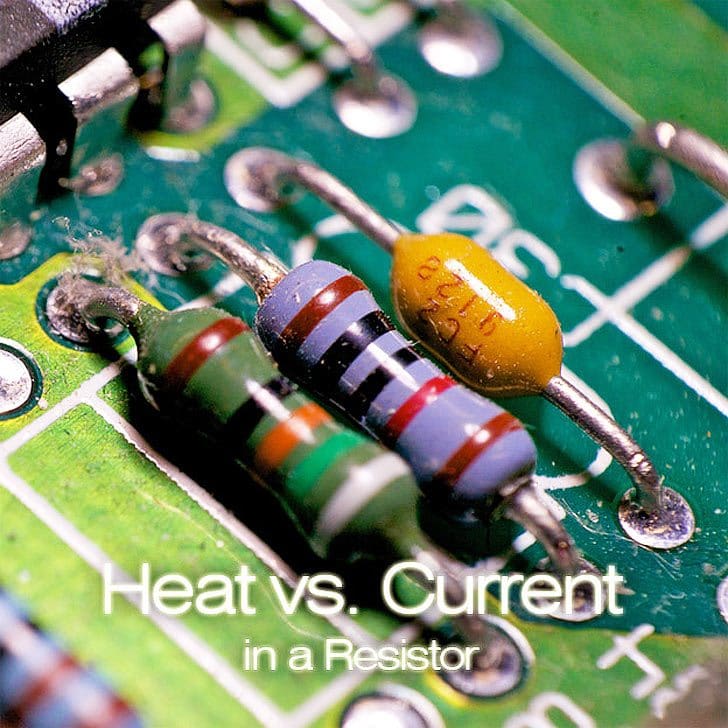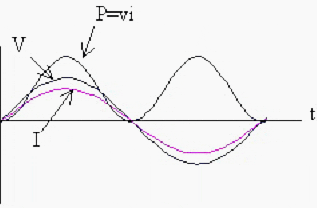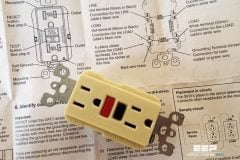Energy can never be destroyed
It is converted from one form to another. One of the most familiar forms of energy is heat.

When a current (I) is forced through a resistor (R) by applying a potential (V), the electrical energy is converted to heat energy as observed by the rise in temperature of the resistor. Remember that power is the rate at which energy is consumed.
Note: Heat is only produced by a resistive load (electrical friction) and not in an inductive or capacitive load.
The value of the real power (P) consumed by the resistor is:
Power = Voltage x Current (P = V x I)
Since we already know that an applied Voltage (V) is required to force Current (I) through a resistor (R), another way of defining Power is:
Power = (Current)2 x Resistance (P = I2 x R)

Note: Real power only occurs when the magnitude of the voltage and current increase and decrease at exactly the same rate as illustrated below.

At any time in an AC circuit the instantaneous power flow in the product of the voltage and the current. In AC circuits the power flow is not constant, but fluctuates with the voltage and current.
The integral of the power with respect to time is the energy delivered to the load. In a purely resistive circuit the product of voltage and current is always positive. In the course of one complete AC cycle energy is delivered to the load.
Reference: Science and Reactor Fundamentals – Electrical CNSC Technical Training Group











this is very easy article. I easily understand concepts. and language is not difficult..
I liked the article and found it refreshing, my question is why the reactive power dont produce heat?
Its an excellent article..We have to understand that basic and simplicity is better than any other complicated scrap..
Instead of complainting others, why not appreciate the publisher effort.
Thank you for writing this article
It is a beautifule article! Sometimes we have to remember basic laws because we trend to forget them. Thank you!
now it is given that a capacitor incorporates a small amount of resistance in series with it and as in the case of an inductor it comes with a small amount of Parallel resistance.
the formula for power can be written in terms of current through of voltage across. In case of parallel resistance this would become sufficiently significant and it has to be taken to account. So if the author clarifies his opinion it would be convenient
Who wrote this rubbish?
Thank you for the kind words Solow46. I wrote this technical article. Do you have some problem with it?
Sir,
I’m new to this site and after reading the author description i think u might help me. I graduated in Electrical & Electronics Engg. how and what skill do i need to develop to succeed any sources or whatever. Can u please guide me.